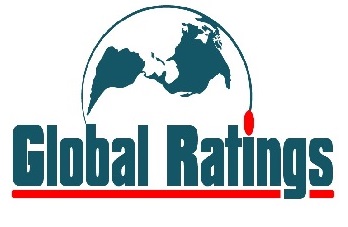Banks are financial institutions providing a breadth of products and services, including managing deposits, lending, wealth management, currency exchange, and investment banking. These banks’ customers include individual consumers, businesses, and many other types of institutional clients. The definition of a commercial bank has evolved dramatically in the past several decades.
Today, large banks cater to their traditional clients, which includes individual customers and both large and small companies by offering savings and checking accounts, certificates of deposit, loans and similar services. Many of them also have businesses that operate as investment banks, and work with corporate and institutional clients by providing underwriting of stock offers, brokerage, and M&A advisory.
Below, we’ll take a look at the 10 biggest banks as measured by 12-month trailing revenue. This list is limited to companies which are publicly traded in the U.S. or Canada, either directly or through ADRs. Some companies outside the U.S. report profits semi-annually instead of quarterly, so the 12-month trailing data may be older than it is for companies that report quarterly. All figures are as of December 16, 2022 and all data is provided by YCharts.
Industrial and Commercial Bank Of China Ltd. (IDCBY)
- Revenue (TTM): $143.32B
- Net Income (TTM): $55.34B
- Market Cap: $173.9B
- 1-Year Trailing Total Return: -2.9%
- Exchange: OTC
The largest bank in the world in terms of total assets under management (AUM) as well as gross revenues is the Industrial and Commercial Bank Of China Ltd. This institution provides credit cards and loans, financing for businesses, and money management services for companies and high net worth individuals. Though this is a commercial bank, it is state-owned.
China Construction Bank Corp. (CICHY)
- Revenue (TTM): $126.79B
- Net Income (TTM): $48.49B
- Market Cap: $148.5B
- 1-Year Trailing Total Return: -4.5%
- Exchange: OTC
The second Chinese bank on our 10 biggest list is China Construction Bank Corp is also the second-largest worldwide. It provides corporate banking services such as e-banking, credit lines, and commercial loans. China Construction Bank also provides personal banking through a separate segment, offering personal loans, deposits, wealth management, and credit cards.
JPMorgan Chase & Co. (JPM)
- Revenue (TTM): $123.42B
- Net Income (TTM): $37.07B
- Market Cap: $381.6B
- 1-Year Trailing Total Return: -15.0%
- Exchange: New York Stock Exchange (NYSE)
JPMorgan Chase & Co. is a multinational bank and financial services holding company involved in corporate lending, asset management, wealth management, and investment and consumer banking, among other offerings.
Bank of America Corp. (BAC)
- Revenue (TTM): $92.48B
- Net Income (TTM): $27.41B
- Market Cap: $254.9
- 1-Year Trailing Total Return: -26.0%
- Exchange: NYSE
Bank of America is a U.S. bank that offers services for individual clients and businesses of all sizes. Besides deposit and checking accounts through its Consumer Banking branch, Bank of America provides a variety of commercial and wealth management services through its Global branches as well.
Wells Fargo & Co. (WFC)
- Revenue (TTM): $74.98B
- Net Income (TTM): $16.07B
- Market Cap: $157.6B
- 1-Year Trailing Total Return: -13.5%
- Exchange: NYSE
Wells Fargo is recognized as a prominent financial institution that offers a diverse range of banking services, including personal and commercial banking, wealth management, and investment banking, catering to the needs of individuals, businesses, and institutional clients.
Citigroup Inc. (C)
- Revenue (TTM): $74.31B
- Net Income (TTM): $15.51B
- Market Cap: $86.4B
- 1-Year Trailing Total Return: -23.0%
- Exchange: NYSE
Citigroup is a multinational investment bank and financial services company based in New York, offering securities services, institutional financial services, global retail banking, and more.
BNP Paribas (BNPQY)
- Revenue (TTM): $70.33B
- Net Income (TTM): $11.17B
- Market Cap: $67.7B
- 1-Year Trailing Total Return: -7.1%
- Exchange: OTC
BNP Paribas is a major international bank headquartered in Paris, France. It is one of the largest banks in the world, with operations in more than 60 countries and a strong presence in Europe, the Middle East, and North Africa.1 The bank offers a wide range of financial services, including retail banking, corporate and investment banking, asset management, and private banking. It serves a diverse range of customers, including individuals, businesses, and institutions, and is known for its expertise in areas such as financing, investment, and risk management.
HSBC Holdings (HSBC)
- Revenue (TTM): $56.28B
- Net Income (TTM): $13.22B
- Market Cap: $119.7B
- 1-Year Trailing Total Return: 8.6%
- Exchange: NYSE
HSBC (short for The Hongkong and Shanghai Banking Corporation) is a multinational bank and financial services company headquartered in London, United Kingdom. It is one of the largest banks in the world by total assets and has operations in more than 60 countries.2 HSBC offers a wide range of financial products and services, including retail and commercial banking, wealth management, and investment banking. The bank serves customers in various sectors, including individuals, small and medium-sized enterprises, and large corporations. In addition to its core banking business, HSBC also has a significant presence in insurance, asset management, and other financial services.
Banco Santander (SAN)
- Revenue (TTM): $54.64B
- Net Income (TTM): $10.40B
- Market Cap: $47.5B
- 1-Year Trailing Total Return: -1.2%
- Exchange: NYSE
Santander is a multinational bank and financial services company headquartered in Madrid, Spain, and has operations in more than 10 countries.3 Santander offers a wide range of financial products and services, including retail and commercial banking, investment banking, asset management, and insurance. The bank serves a diverse range of customers, including individuals, small and medium-sized enterprises, and large corporations. In addition to its core banking business, Santander also has a significant presence in the asset management and insurance sectors.
China Merchants Bank (CIHKY)
- Revenue (TTM): $51.79B
- Net Income (TTM): $20.30B
- Market Cap: $133.4B
- 1-Year Trailing Total Return: -32.2%
- Exchange: OTC
China Merchants Bank (CMB) is a state-owned bank in China that provides a range of financial products and services, including retail and corporate banking, investment banking, and asset management. It is headquartered in Shenzhen, China and has branches and outlets throughout the country, as well as operations in Hong Kong, Europe, and the United States. CMB is one of the largest banks in China and is known for its strong focus on retail banking, with a large network of branches and ATMs and a range of products and services tailored to the needs of individual customers. The bank also has a significant presence in corporate banking and serves a diverse range of customers, including small and medium-sized enterprises and large corporations.
What Are the Largest Banks by Market Capitalization?
Market capitalization (or “market cap”) is a measure of a public company’s value taken by multiplying its share price by the number of shares outstanding. Note that this list will not match the top banks by revenue. Also note that as stock prices fluctuate, the relative ordering of market cap can change from day to day or week to week.
The top 10 banks by market cap as of March 20, 2023 are:
| Top 10 Banks By Market Cap (as of 3/20/23) | ||
|---|---|---|
| Name | Ticker | Market Cap |
| JP Morgan Chase | JPM | $376 billion |
| Bank of America | BAC | $225 billion |
| Industrial and Commercial Bank of China (ICBC) | IDCBY | $224 billion |
| China Construction Bank | CICHY` | $163 billion |
| Bank of China | BACHF | $158 billion |
| Agricultural Bank of China | ACGBY | $154 billion |
| Morgan Stanley | MS | $145 billion |
| Wells Fargo | WFC | $144 billion |
| HSBC | HSBC | $133 billion |
| Royal Bank of Canada | RY | $130 billion |
Source: Yahoo! Finance
How Do Banks Make Money?
Banks make money basically by borrowing from depositors and lending to borrowers. The spread between the interest rate that they credit depositors and the rate that they charge borrowers for new loans is known as the spread or net interest income – and this is the primary source of banks’ revenues. Banks also make money from charging fees or commissions for various services, such as account servicing, brokerage, wealth management, financial advising, investment banking, and so on.
How Did the Biggest Banks Get So Big?
The largest banks have grown to their current size through a combination of factors, including organic growth, mergers and acquisitions, innovation, and market dominance.
Organic growth occurs as banks expand their customer base, offer new products and services, and increase their assets under management. Mergers and acquisitions (M&A) have played a significant role in the growth of big banks, as they consolidate their market positions by acquiring or merging with other financial institutions.
The Bottom Line
The world’s biggest banks have grown substantially over time through a combination of organic growth, mergers and acquisitions, innovation, and market dominance. They offer a wide range of financial products and services to individual consumers, businesses, and institutional clients, such as managing deposits, lending, wealth management, currency exchange, and investment banking. The top banks by both revenue and market cap are concentrated in the U.S. and China, a trend that has seen major European banks lose their global dominance over the past decades.














